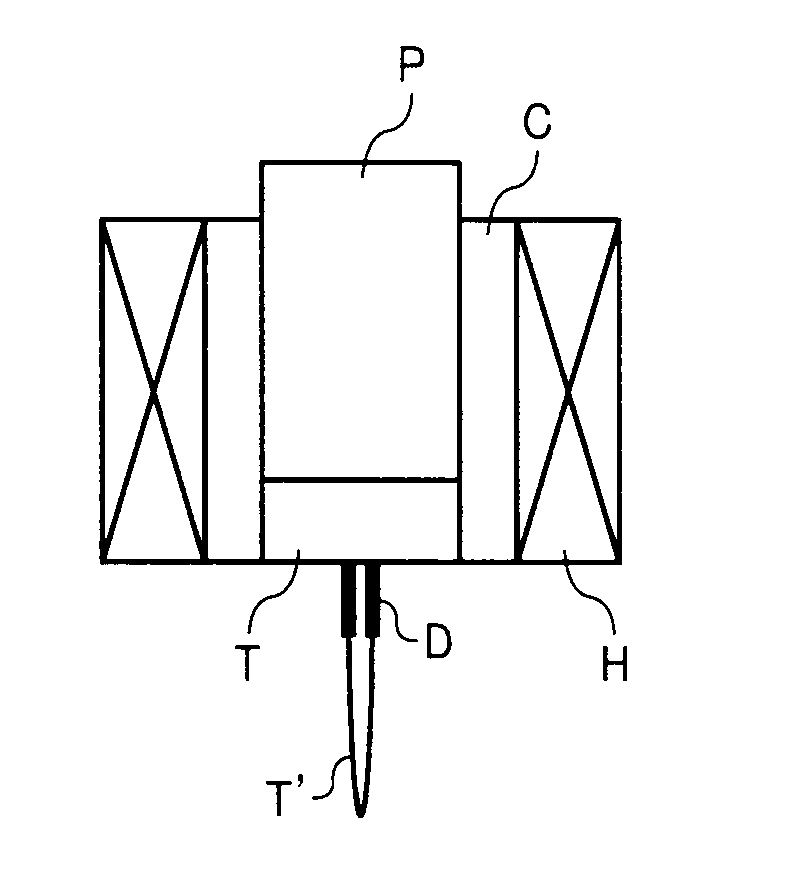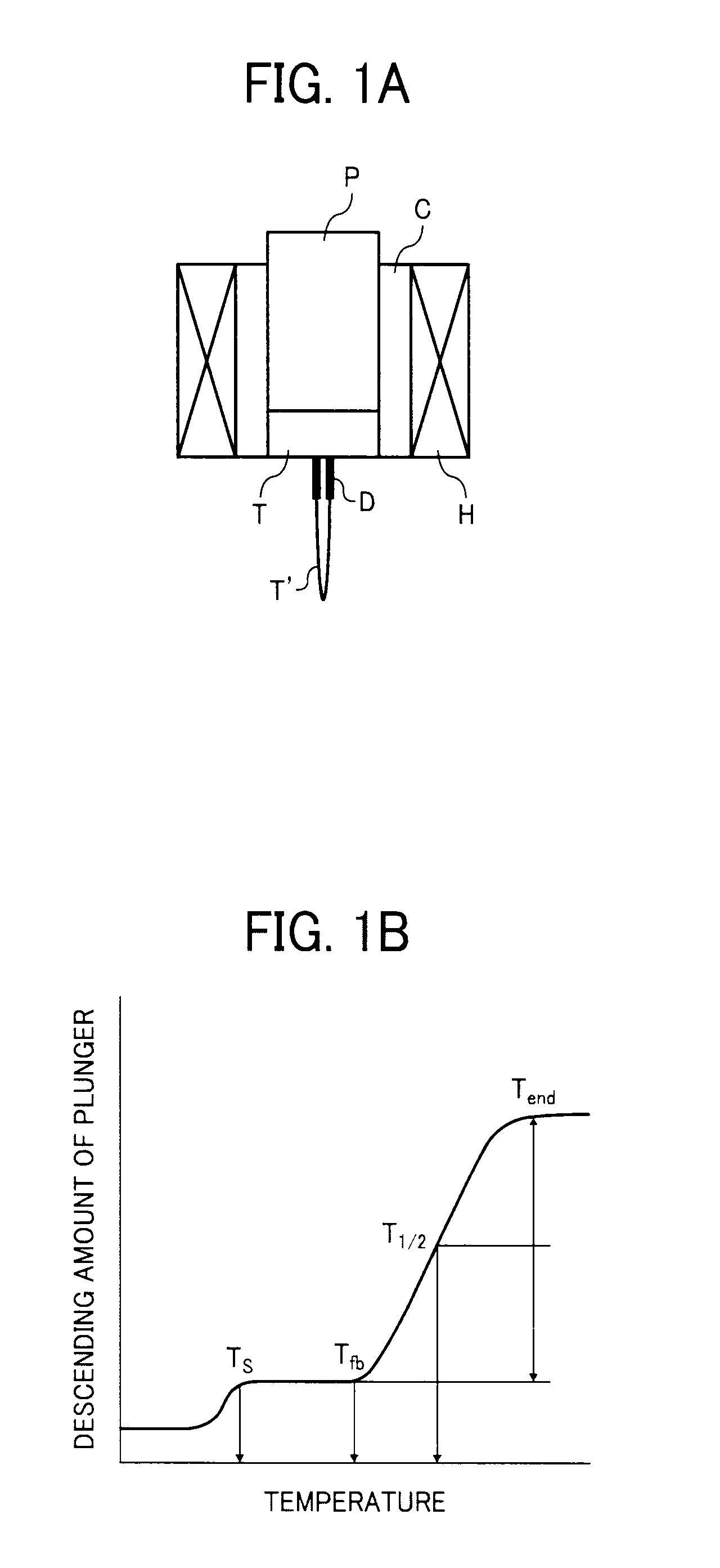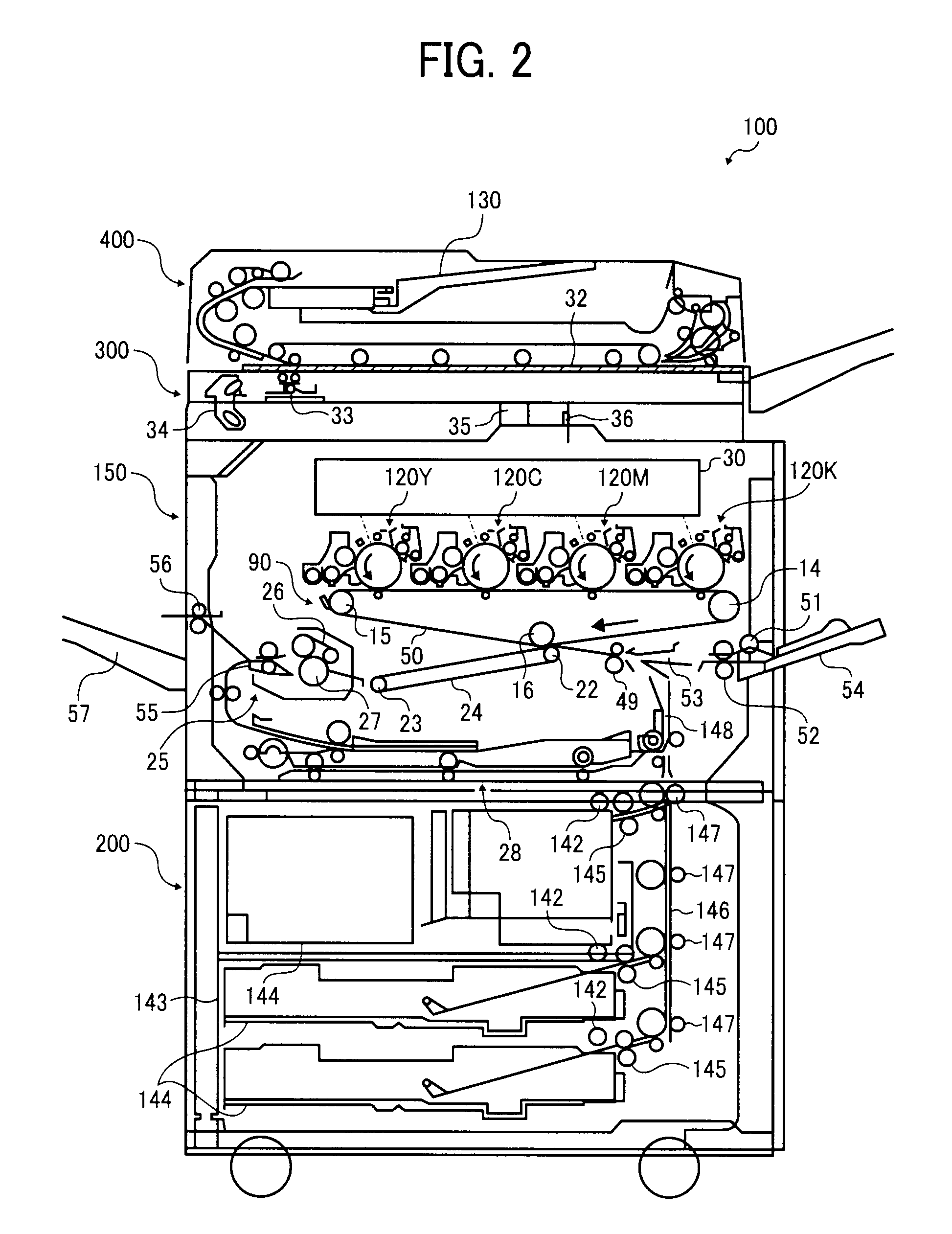Toner, development agent, and image formation method
a technology of development agent and development agent, which is applied in the direction of instruments, electrographic process equipment, developers, etc., can solve the problems of deterioration of development stability, achieve excellent low temperature fixing properties, prevent winding of recording medium, and improve development stability
- Summary
- Abstract
- Description
- Claims
- Application Information
AI Technical Summary
Benefits of technology
Problems solved by technology
Method used
Image
Examples
example 1
[0357]The following recipe is placed in a container equipped with a stirrer and a thermometer and stirred at 3,800 rpm for 30 minutes:
Deionized water683partsSodium salt of sulfate of an adduct of methacrylic11partsacid with ethyleneoxide (EREMINOR RS-30,manufactured by Sanyo Chemical Industries, Ltd.)Polylactic acid10partsStyrene60partsMethacrylic acid100partsButyl acrylate70partsAmmonium persulfate1part
[0358]After the system is heated to 75° C. for reaction for four hours, 30 parts of one weight % aqueous solution of ammonium persulfate is added and the system is aged for six hours at 75° C. to obtain [Liquid dispersion 1] of resin particles.
[0359]The weight average particle diameter of [Liquid dispersion 1] of resin particles measured by using a laser scattering particle size distribution analyzer LA-920, manufactured by Horiba, Ltd. is 280 nm.
[0360]In addition, the resin of [Liquid dispersion 1] of the resin particles is isolated. The isolated resin has a glass transition tempera...
example 2
[0379]The following recipe is placed in a container equipped with a stirrer and a thermometer and stirred at 3,800 rpm for 20 minutes:
Deionized water683partsSodium salt of sulfate of an adduct of methacrylic11partsacid with ethyleneoxide (EREMINOR RS-30,manufactured by Sanyo Chemical Industries, Ltd.)Polylactic acid10partsStyrene60partsMethacrylic acid100partsButyl acrylate70partsAmmonium persulfate1part
[0380]After the system is heated to 75° C. for reaction for three hours, 30 parts of one weight % aqueous solution of ammonium persulfate is added and the system is aged for 12 hours at 65° C. to obtain [Liquid dispersion 2] of resin particles.
[0381]The weight average particle diameter of [Liquid dispersion 2] of the resin particles measured by using a laser scattering particle size distribution analyzer LA-920, manufactured by Horiba, Ltd. is 390 nm.
[0382]In addition, the resin of [Liquid dispersion 2] of resin particles is isolated. The isolated resin has a glass transition tempera...
example 3
[0384]The following recipe is placed in a container equipped with a stirrer and a thermometer and stirred at 2,000 rpm for 20 minutes:
Deionized water683partsSodium salt of sulfate of an adduct of methacrylic11partsacid with ethyleneoxide (EREMINOR RS-30,manufactured by Sanyo Chemical Industries, Ltd.)Polylactic acid10partsStyrene60partsMethacrylic acid100partsButyl acrylate70partsAmmonium persulfate1part
[0385]After the system is heated to 75° C. for reaction for 3 hours, 30 parts of one weight % aqueous solution of ammonium persulfate is added and the system is aged for 12 hours at 65° C. to obtain [Liquid dispersion 3] of resin particles. The weight average particle diameter of [Liquid dispersion 3] of resin particles measured by using a laser scattering particle size distribution analyzer LA-920, manufactured by Horiba, Ltd. is 640 nm.
[0386]In addition, the resin of [Liquid dispersion 3] of resin particles is isolated. The isolated resin has a glass transition temperature of 59° C...
PUM
| Property | Measurement | Unit |
|---|---|---|
| thickness | aaaaa | aaaaa |
| number average particle diameter | aaaaa | aaaaa |
| surface pressure | aaaaa | aaaaa |
Abstract
Description
Claims
Application Information
 Login to View More
Login to View More - R&D
- Intellectual Property
- Life Sciences
- Materials
- Tech Scout
- Unparalleled Data Quality
- Higher Quality Content
- 60% Fewer Hallucinations
Browse by: Latest US Patents, China's latest patents, Technical Efficacy Thesaurus, Application Domain, Technology Topic, Popular Technical Reports.
© 2025 PatSnap. All rights reserved.Legal|Privacy policy|Modern Slavery Act Transparency Statement|Sitemap|About US| Contact US: help@patsnap.com



